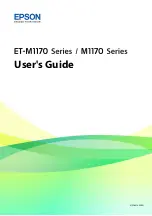Summary of Contents for CP60
Page 1: ...Datacard CP60 and CP60 Plus Card Printers Service Manual May 2007 Part No 539358 002 Rev C ...
Page 12: ...1 4 Introduction ...
Page 14: ...2 2 Theory of Operation Printer Components Functional Block Diagram ...
Page 19: ...CP60 and CP60 Plus Service Manual 2 7 LCD Menu Diagram ...
Page 50: ...2 38 Theory of Operation ...
Page 124: ...5 40 Adjustments ...
Page 128: ...6 4 Removal and Replacement Front Wire Routing ...
Page 129: ...CP60 and CP60 Plus Service Manual 6 5 Duplex and Printhead Wire Routing ...
Page 130: ...6 6 Removal and Replacement Functional Block Diagram ...

















































